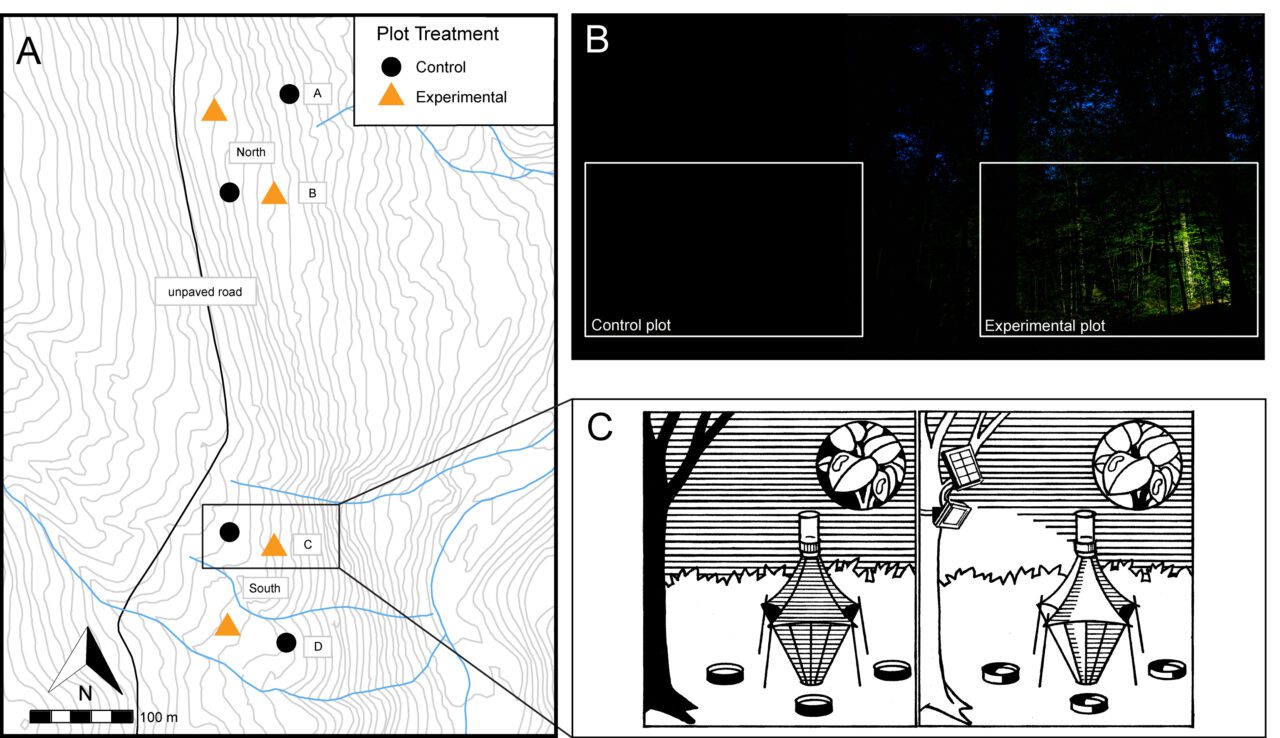New Paper!
Proc. R. Soc. B 290: 20230153. https://doi.org/10.1098/rspb.2023.0153
Artificial light at night increases top-down pressure on caterpillars: experimental evidence from a light-naive forest
John F. Deitsch1,2 and Sara A. Kaiser3
1Department of Entomology, 2Department of Biological Sciences, and 3Center for Biodiversity Sciences, Cornell Laboratory of Ornithology, Cornell University, Ithaca, NY 14850, USA
Artificial light at night (ALAN) is a globally widespread and expanding form of anthropogenic change that impacts arthropod biodiversity. ALAN alters interspecific interactions between arthropods, including predation and parasit- ism. Despite their ecological importance as prey and hosts, the impact of ALAN on larval arthropod stages, such as caterpillars, is poorly understood. We examined the hypothesis that ALAN increases top-down pressure on caterpil- lars from arthropod predators and parasitoids. We experimentally illuminated study plots with moderate levels (10–15 lux) of LED lighting at light-naive Hubbard Brook Experimental Forest, New Hampshire. We measured and compared between experimental and control plots: (i) predation on clay cater- pillars, and (ii) abundance of arthropod predators and parasitoids. We found that predation rates on clay caterpillars and abundance of arthropod predators and parasitoids were significantly higher on ALAN treatment plots relative to control plots. These results suggest that moderate levels of ALAN increase top-down pressure on caterpillars. We did not test mechanisms, but sampling data indicates that increased abundance of predators near lights may play a role. This study highlights the importance of examining the effects of ALAN on both adult and larval life stages and suggests potential consequences of ALAN on arthropod populations and communities.

